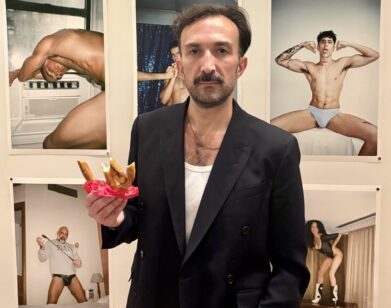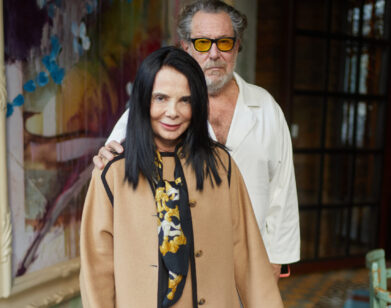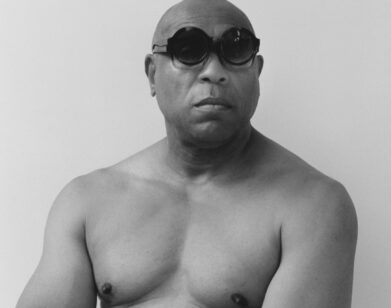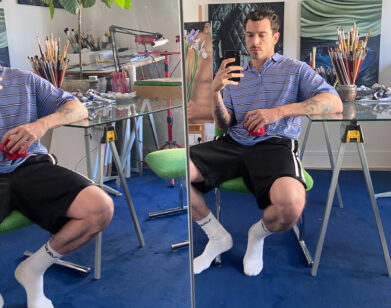Whatever the Kost
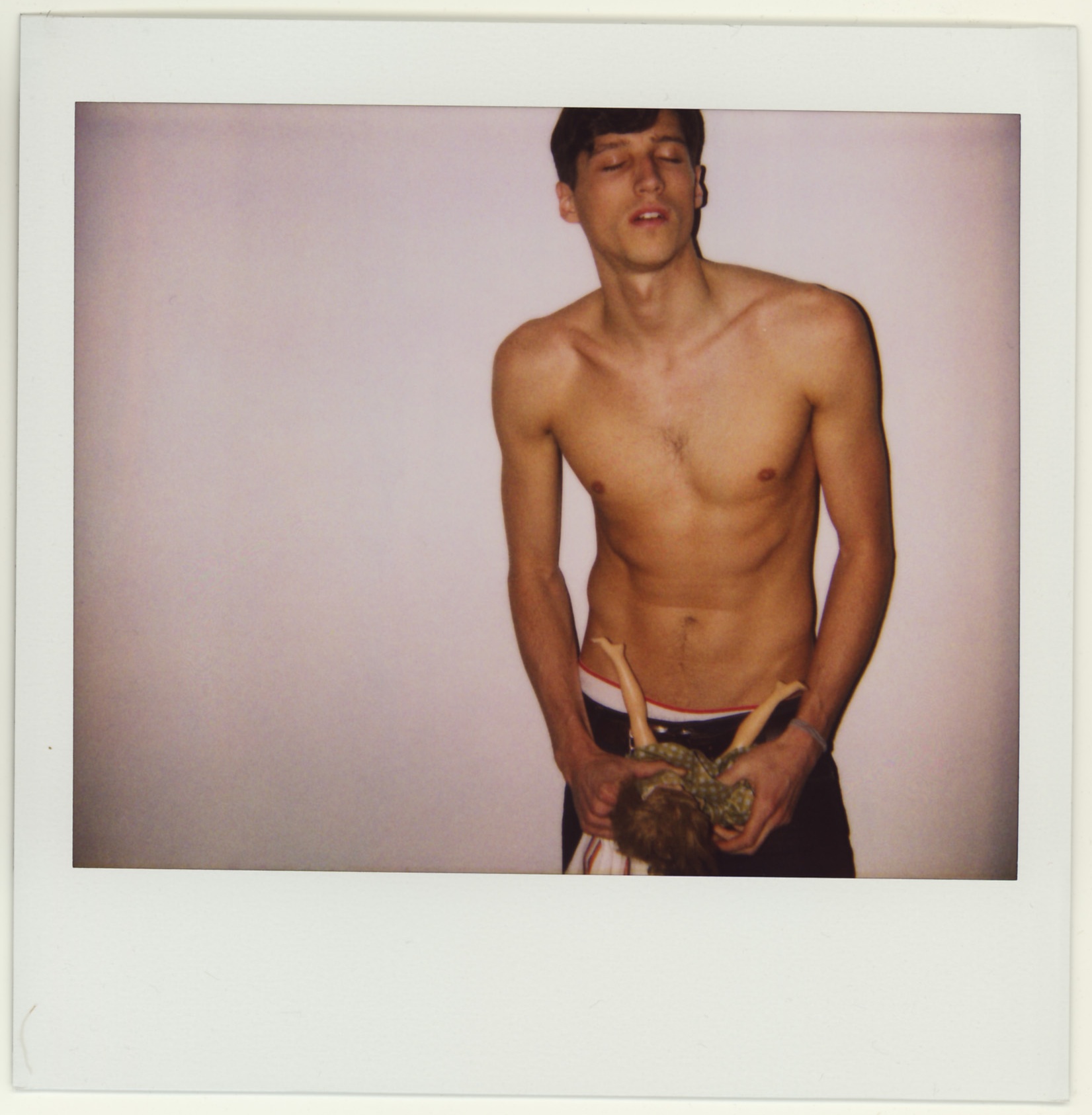
Vladamir Collage, by Jeremy Kost
Photographer Jeremy Kost, best known for his candid Polaroids of young men with killer abs—not to mention celebrities, post-op transsexuals, and club kids—premiered his latest show “After the Party” at the Dactyl Foundation last week. “After the Party” curated by P.S. 1’s Tim Goossens. The show delves into a world of desire and sexual attraction, with Kost shooting quintessentially beautiful young men in various stages of undress. These photos, unaltered by makeup or special effects, are exhibited in a grid or in a collage of various photographs, to create narrative, and themes of the loss of innocence. Kost has upcoming shows this Fall with Conner Contemporary Art in Washington, D.C., and with Nuke Gallery in Paris. He sat down with Interview to discuss what motivates his art, his life as an Internet account manager, and how a 250-lb. kid from Texas met Michael Stipe.
ADAM KLAPPHOLZ: I read that you fell into photography. What were your career plans before that?
JEREMY KOST: I was a global account manager for an Internet company. When I lived in DC, I used to wear shorts and flip-flops and had a big huge mohawk. Those were also the Internet days, circa ’99, when you could do that. And then I moved to New York, when I transferred with that job, but once I got to New York, I had to wear a suit and tie.
AK: People know a little bit about you from your nightlife personality.
Adam Phebus; Installation shot
JK: All of a sudden I was thrown into this world where, before I knew it, I was out until four-thirty in the morning, came home, showered, and was at work at eight. It wasn’t pleasant. And then, toward the end of it, in 2006, people at the office started to see things about me in the Daily News or whatever. That was when I realized I couldn’t do both anymore.
AK: I’m sure. It’s a great story, though.
JK: Life’s really fucking great I make Polaroids for a living. I get to work with incredible people. When I was in college I went to go see REM-and I was a huge REM fan. To have Michael Stipe come to my show for my work last Saturday was kind of a special thing. You go from being this 250-pound fat kid in Texas to having somebody whose music you listened to when you were growing up come to see your work and be a part of it. That’s really special.
AK: How long have you been working with Polaroids?
JK: Since 2001, or 2002.
Reid Prebenda; Ryan Kennedy
AK: Will you have to switch from Polaroid cameras now that the film is no longer produced?
JK: There’s quite a bit of stock, surprisingly. That said, it’s super expensive. So I’m just making work as long as I can. Fuji has been sending me this new product and that’s what I shot during fashion week, and I’ve been using it for more public-related work. I’m still shooting exclusively Polaroid for artwork and stuff that I do in private and editorial.
AK: We’ve all taken terrible photos with a Polaroid camera; they seem so facile. How do you take quality pictures with a Polaroid?
JK: I’ve shot 20,000 to 25,000 of them. I have literally, closets full of archives.
AK: Your pictures in “After the Party” are mostly young men in various states of undress.
JK: As a gay male, there’s always that draw towards what turns you on. That’s sort of the over-arching theme tying together that body of work. There’s multiple bodies of work though. There’s stuff that I do in Thailand with transsexuals. There’s the stuff I do with celebrities. There’s the stuff I do in downtown New York.
AK: Is it hard to gain the trust of the models?
JK: A lot of the guys that I’ve been shooting lately have been from agencies. They’re working models. When we were first doing it, all the boys were being found through Myspace and Facebook and Manhunt. But to answer your question: they’re working models. They know that I’m not taking pictures to get off. That’s how I gain their comfort and their trust and their respect.
AK: You mentioned all the different kinds of subjects you shoot: club kids, transsexuals, and celebrities; do you have a favorite?
JK: As I grow as an artist-and I really feel like I’ve grown substantially in this short period of time-I feel like I’m going beyond documentary photography. I’m getting in these situations where I’m able to construct a vision and execute against it, that’s really what gets me excited.
AK: When you go out and shoot candid pictures of people, do they ever want to keep the Polaroid?
JK: It’s really important that every single picture from the photo shoot go in to the piece. There’s no editing that goes into it, so it doesn’t matter if there’s an unflattering one, or there’s a really big one. Everything is considered the same. Nothing is omitted. There’s no filter. It keeps the integrity of the whole moment unfolding for you.
AK: Since your arrival in 2004, how has the New York downtown art scene evolved?
JK: I went through this phase where I would hang out and party a lot and did the whole downtown art world thing. Then I realized that it wasn’t doing anything for me except for giving me a hangover.
The overarching thing that I look at about my work is hopefully leaving something that matters. Hopefully something that changes the discourse of those that came before me. So whether it’s Warhol, whether it’s Mapplethorpe, whether it’s Larry Clark. Any of those people are where I find inspiration, but hopefully my work continues that and carries that discourse one step further. I don’t think anybody will ever be Andy, but that being said, hopefully we can do things that aren’t derivative and have our own voice.
The Dactyl Foundation is located 64 Grand Street, New York. Jeremy Kost, “After the Party,” is open Tuesday–Saturday, 12–6PM, and on view through March 21.

